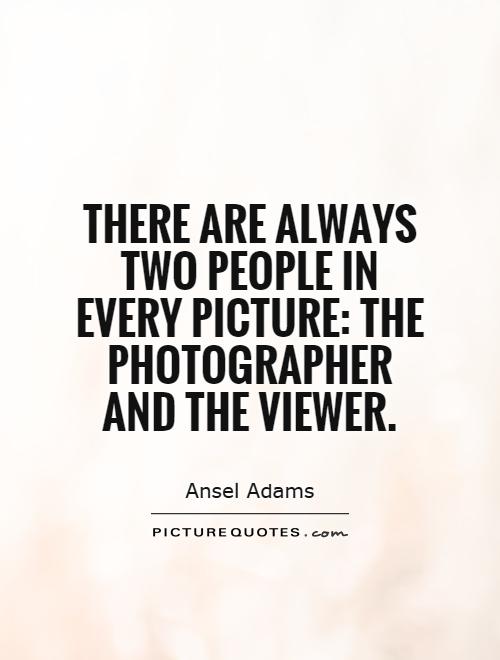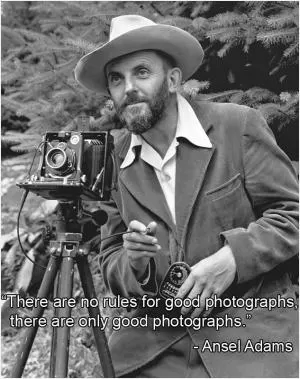There are always two people in every picture: The photographer and the viewer

There are always two people in every picture: The photographer and the viewer
Ansel Adams, a renowned American photographer and environmentalist, once said, “There are always two people in every picture: the photographer and the viewer.” This statement encapsulates the essence of photography as an art form that involves both the creator and the audience in a dynamic relationship.Ansel Adams was known for his iconic black and white landscape photographs of the American West, particularly of the Yosemite National Park. His images captured the grandeur and beauty of nature in a way that resonated with viewers on a deep emotional level. Adams believed that a photograph was not just a representation of reality, but a reflection of the photographer's vision and interpretation of the world.
In Adams' work, the photographer plays a crucial role in shaping the image through composition, lighting, and technical skill. The photographer's creative choices, such as the use of contrast, texture, and perspective, can evoke a range of emotions and responses from the viewer. Adams' meticulous attention to detail and his mastery of the medium allowed him to create images that were not just visually stunning, but also thought-provoking and contemplative.
At the same time, the viewer also plays a vital role in the interpretation of a photograph. Each viewer brings their own experiences, emotions, and perspectives to the image, which can influence how they perceive and connect with the photograph. The viewer's personal background, cultural beliefs, and aesthetic preferences all shape their response to the image, making each viewing experience unique and subjective.
Adams understood the power of photography to communicate and evoke a response from the viewer. He believed that a successful photograph was one that could transcend the limitations of language and convey a universal message or emotion. By engaging the viewer in a dialogue with the image, Adams sought to create a connection that went beyond the surface beauty of the photograph.












 Friendship Quotes
Friendship Quotes Love Quotes
Love Quotes Life Quotes
Life Quotes Funny Quotes
Funny Quotes Motivational Quotes
Motivational Quotes Inspirational Quotes
Inspirational Quotes